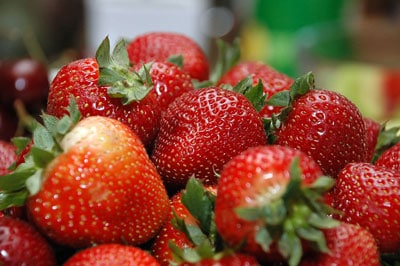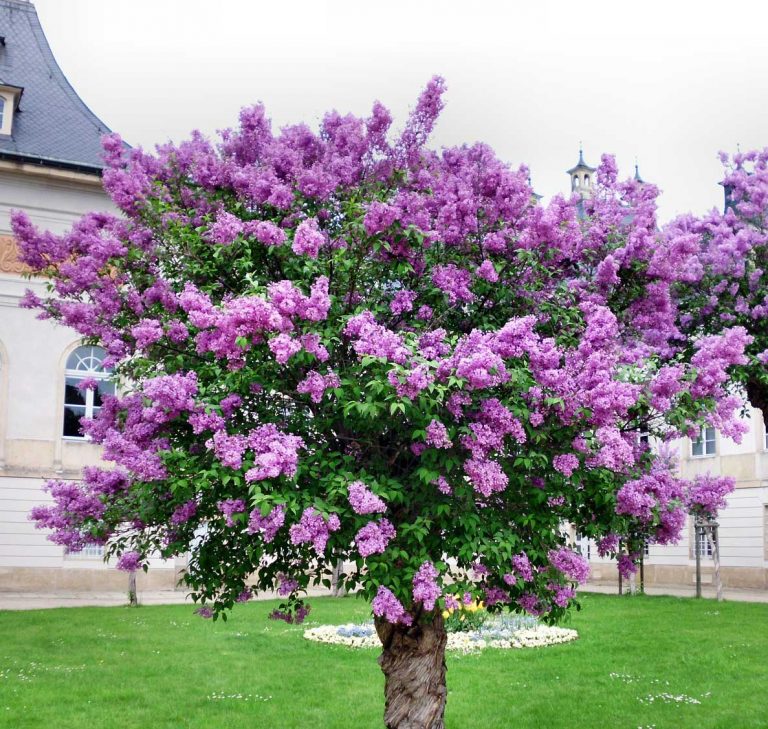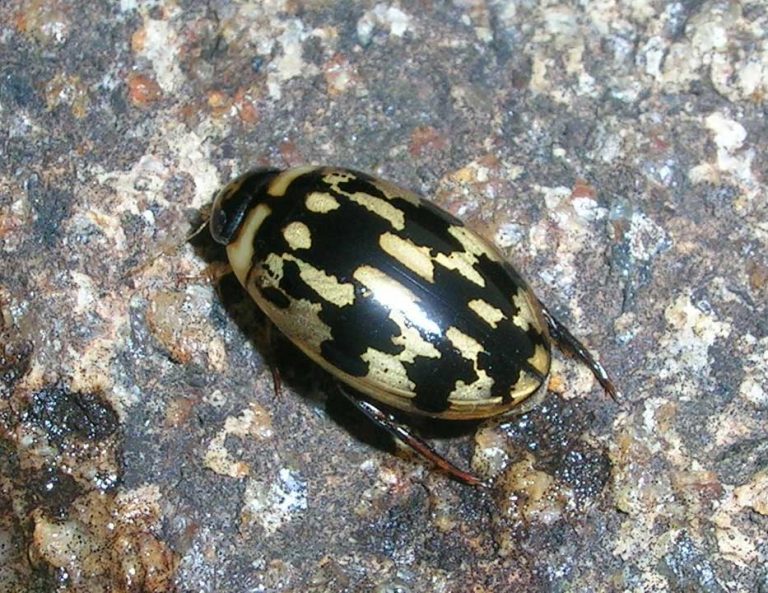Strawberry
Scientific Classification
| Kingdom: | Plantae |
| (unranked): | Angiosperms |
| (unranked): | Eudicots |
| (unranked): | Rosids |
| Order: | Rosales |
| Family: | Rosaceae |
| Subfamily: | Rosoideae |
| Genus: | Fragaria |
| Species: | F. × ananassa |
| Binomial name: | Fragaria × ananassa Duchesne |

The garden strawberry or just strawberry, Fragaria x ananassa, is a hybrid variety grown all over belonging to the Fragaria variety (in general we call them strawberries). All over the world, people cultivate it for its fruit. This fruit is a collective accessory fruit and not a botanical berry. Many value this fruit for its peculiar fragrance, sweet taste, juicy contents and deep red color. Packed with antioxidants like Vitamin E, strawberry health benefits are many.
Anatomy
In the technical terms the strawberry is a collective accessory fruit. It means the receptacle which clasps the ovary forms the flesh of the fruit and not the ovaries of the plant. Every “seed” (achene) seen on the exterior of the fruit is in fact the flower’s ovary that has a seed in it.
Habitat
In 1750s Brittany in France took the initiative of breeding this garden strawberry. In 1714 Amedee-Francois Frezier brought it to the West from Chile.
Growing Strawberry at Home

Soil and Planting
Strawberries thrive in most of the soil varieties, they can grow in any type of weather starting from the harsh weather in Spain to the moist and cool weather of Scotland, and they do not need any supplement of nutrients. Giving them a greenhouse effect and the right choice of plant, and the fruit yields for six months of the year. Suppose your soil lacks nutrients, and then add one burrow of nicely rotted manure for every 12 m2.
Planting
Plant your new creepers at the earliest in pots or in beds that are ready, in an area where you intend permanently to plant them,. Plant your strawberry at a distance of 35 to 45 cm from each other in rows and 75 cm space between rows and in enriched soils, space them widely. Never expose the roots nor bury the crown (follow instructions). With the help of your knuckles or heels moderately firm up the soil.
Watering
Because of their shallow roots, give them sufficient water, approximately one inch a week. The Strawberry plant requires a big amount of water when creepers are establishing and during the blooming period, as well as in the fall when they grow fully.
Care
- Mulch with straw when the fruits develop to keep away the soil from touching the fruits as well as to keep moisture.
- If you grow the berries in polyethylene bags you need not use straw to mulch them. Use mulch only to reduce the need for water and to prevent the untimely of growth of weeds.
- Take care while weeding, particularly during the initial period of planting, and make sure that your weed manually.
Pests and Pesticides

Photo by: ShakataGaNai
Botrytis (Grey mould): the most commonly seen disease is the grey mould caused by a fungus botrytis cinerea. It causes the growth fuzzy grey mould.
Remedy: discard the wilting leaves, flowers and buds in time. Never allow any dead plants to lie around. Increase air circulation by not overcrowding the plants and decrease the moisture content.
Powdery mildew: This is a coating of white colored powder that appears above the leaf surface which in due course withers away.
Remedy: Be certain not to let the water settle on the leaves, sustain moisture to the roots and confirm the proper ventilation for the plants.
Harvest Month and Storage
- 4-6 weeks after flowering is the right time for harvesting the fruits.
- Pick the berries every three days and harvest only those berries that are fully red (ripe). Never pull the berries, but snip them by the stem.
- Your harvest lasts for three weeks. You have sufficient quantities of berries, based on the varieties.
- Store your unwashed berries in the refrigerator for a period of 3 – 5 days.
- It is possible to freeze your strawberries in whole for approximately two months.
Varieties
Two broad categories: perpetual and summer fruiting. The former is a bit misnomer where the plants do not really bear fruit for one year, however, you can extend the reaping to get small frequent supply of late strawberries from August till winter.

Having discovered a fondness for insects while pursuing her degree in Biology, Randi Jones was quite bugged to know that people usually dismissed these little creatures as “creepy-crawlies”.







